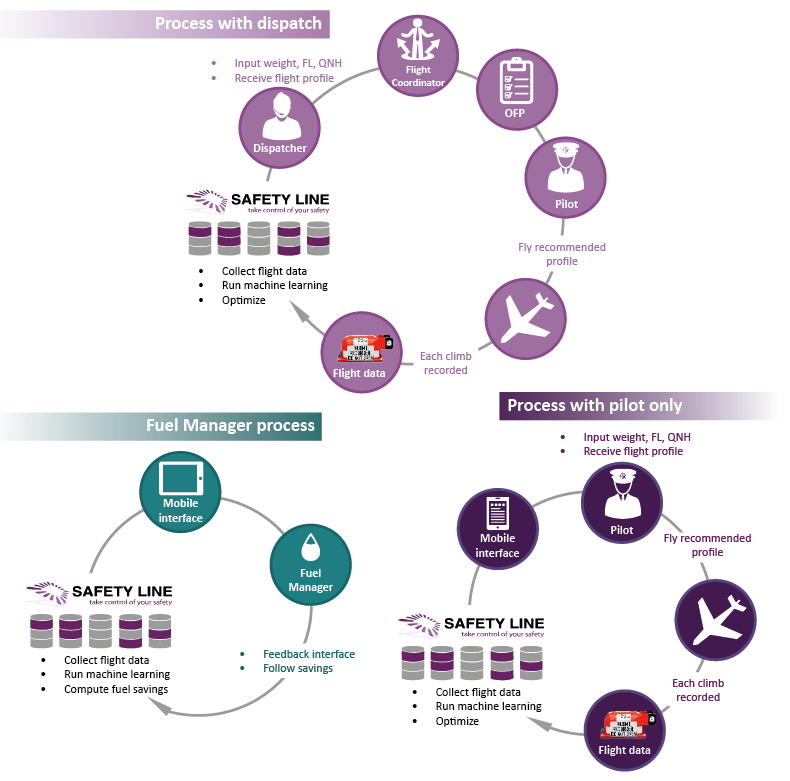FROM FLIGHT DATA TO FUEL SAVINGS
About OptiClimb
OptiClimb is a service that aims at reducing the fuel consumption through the use of flight data. For each aircraft, data are used to build a fine tuned model that allows to optimize the climb phase. The fuel consumption is minimized by adapting the climb profile.
Key figures
- Fuel consumption represents 30% of airlines operational costs
- Almost 3% of global CO emissions are produced by air transport
- The annualized passenger figure is expected to reach over 6 billion by 2030
- Fuel consumption during clib is at its highest
How much fuel?
Climb phase is when the engines run close to full power. Reducing fuel consumption during this phase is a real opportunity. The observed fuel saving achieved with our method is around 10% of climb phase. For 100 flights a day on a single-aisle aircraft, this amounts to more than 15 t each day. At the end of the year, the savings are over 4M€.

The process
1) Collect
The first step requires analysis of historical flight data to build the aerodynamic model. The only source of data needed is QAR data without any information on flight date, origin and destination, flight number or heading, thus avoiding all confidentiality issues.
2) Analyse
With the collected data, Safety Line then extracts very precise aerodynamic characteristics in using its in-house machine learning algorithms.
3) Prepare
In accordance with current regulations and to ensure the safety of the experimentation, Safety Line will work with the airline to perform a Risk Analysis for authorities.
4) Fly
Before the flight, the dispatcher, or the pilot himself, enters the necessary information in the system: actual weight, cruising altitude, temperature, and pressure at departure airport. The optimization algorithm will then provide the best climb profile with 3 optimum speeds.
5) Compare
A dedicated interface is provided to the Fuel Manager to check the results of the savings. He will know for each flight the exact amount of fuel burnt and can compare it with the fuel that would have been needed to climb at constant speed.

